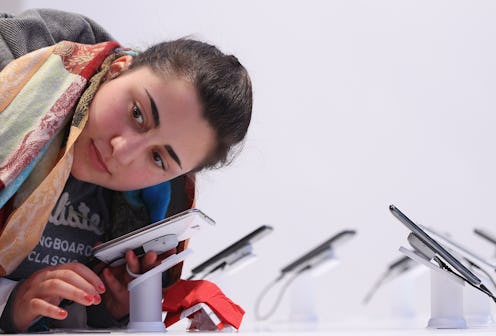News
Women, Minorities Aren't Taking This Test
We may sound like a broken record: Yes, we need more women in tech. Yes, people of color are underrepresented in tech. Yes, women and people of color are underrepresented in STEM fields, and we have to fix that. But the following statistics about just how many high school female and minority students took the Advanced Placement Computer Science exam is downright bleak.
According to College Board data compiled by Georgia Tech's Director of Computing Outreach, Barbara Ericson, this is the harsh truth:
- No female students took the AP exam in Mississippi or Montana, or Wyoming.
- Not one black student took AP computer science in Alaska, Idaho, Kansas, Maine, Mississippi, Montana, Nebraska, New Mexico, North Dakota, Utah, and Wyoming. That's 11 states.
- No Latino students took it in Alaska, Idaho, Kansas, Mississippi, Montana, Nebraska, North Dakota, and Wyoming. That's a total of eight states.
This means that in eight states — Alaska, Idaho, Kansas, Mississippi, Montana, Nebraska, North Dakota, and Wyoming — there were no black or Latino students who took the exam. This also means that in three states — Mississippi, Montana, and Wyoming — there were absolutely no female, black, or Latino students that took the exam. At all. How is that even possible?
College Board spokesperson Deborah Davis provided context for a few of the findings. In an email she wrote to Education Week, she says Wyoming was originally counted in the data, when in fact, not a single student from Wyoming took the exam — male, female, black or white. Mississippi also administered only one Computer Science exam, and Montana only administered 11.
That context is absolutely valuable. But, still:
As Ericson pointed out, it is suburban/private schools — rather than poorer urban schools — which have the opportunity to even offer the AP Computer Science courses. For the 2013-2014 year, 2,300 high schools are officially recognized by the College Board as offering the course — which is merely 15 percent of the 15,000 total high schools that offer any AP course.
And this is where the inequality and underrepresentation begin. This is the root of the struggle for more gender and racial diversity in Silicon Valley.
While initiatives such as Girl Develop It, Black Girls Code, and Code 2040 may exist to provide mentorship and internship opportunities to female, black, and Latino students at a young age, these numbers show the need that remains is incredible.
The results may be bleak, but let's not despair — it's a new year, and the conversation on diversity in tech is blowing up. The more we demand for change, the more likely we'll come to a solution that can revolutionize the tech industry's diversity problem from the bottom-up.
Watch a video by Black Girls Code below for an idea of how they're trying to defeat part of tech's diversity problem:
